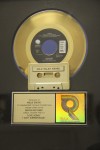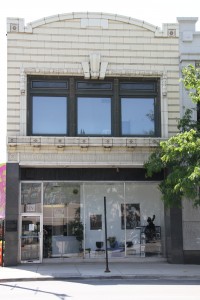Chicago is known internationally for it’s contribution to architecture, and the birthplace of the atomic age. It gave the world Frank Lloyd Wright, Michael Jordan, Deep-dish pizza, Second City improv and Playboy magazine. But I would argue Chicago’s greatest gift to the world was the “Electric Blues.
No discussion about the history of “The Blues” can begin without addressing our nation’s greatest moral lapse; slavery. From as early as around 1619 to 1863 when President Lincoln issued the Emancipation Proclamation, followed by the 13th amendment signed in 1865- slavery was legal. During those years as many as 645,000 Africans were ripped from their homelands, locked in chains and brought to what is now the United States
While unable to bring positions or their way of life, they did bring memories and a rich musical heritage. For many writing and then singing those songs, was a way to maintain a link to their past, as well a way to pass a part of their traditions down to future generations. As these Afro-Americans adopted Christianity, and were exposed to Western European music through church; those European hymns were combined with the melodic and rhythmic styles brought from Africa. Among them, it was probably the strong use of the “Pentatonic Scale”
With the end of slavery, Some black musicians found an opportunity to scratch out a meager living playing at brothels, “Night-Clubs” and small variety shows around the Mississippi Delta. Due to strict segregation laws, particularly in the “South”, these early Blues Artists had very limited places to perform, and those spots were often targeted and closed down.
Following jobs and opportunities, many African Americans moved north to large cities like Detroit, St Louis, New York and Chicago. With many of the black-owned clubs and other establishments in the south being shutdown, a number of the Blues musicians followed their audiences north. While segregation and racism met them in these cities, they did find a greater range of venues. It was the combination of larger venues and the innovation of the “Electric guitar” in 1931 that led to the creation of what we now know as the “Chicago Blues” Based of a 12 bar progression, a pentatonic scale and other elements carried over from Delta blues, the music had a very different sound and feel.
2120 S Michigan Ave. is the single most famous address in the history of the blues. It here in the recording studio of Chess Records that Muddy Waters, Willie Dixon, John Lee Hooker, Howlin’ Wolf, and Elmore James among others, recorded national hits with blues songs.

Maxwell Street was a large open market on the near-South-side that brought together Jewish immigrant merchants with the largely African-Americans residents who migrated north from the Mississippi Delta. Years later after many of the Jewish families moved to the suburbs, their kids would come work down at Maxwell on weekends, they would hear the Black musician belting out the Blues, fell in love with the sound and spread the word back to the north side. Every great Rock band owes it’s existence to those early blues musician , The Rolling Stones even flying to Chicago to record at Chess. Chicago Blues clubs spread from the south to the northern suburbs, ever guaranteing Chicago the Home of the Blues.
So here’s your chance to vote for your Favorite Chicago Blues Guitarist.
Vote for your top 5
[poll id=”02″]
Written by Lane J Lubell
A pentatonic scale is a musical scale with five pitches per octave, rather than the 7 tone scale of Bach, and the music that would be found in the White Churches.
